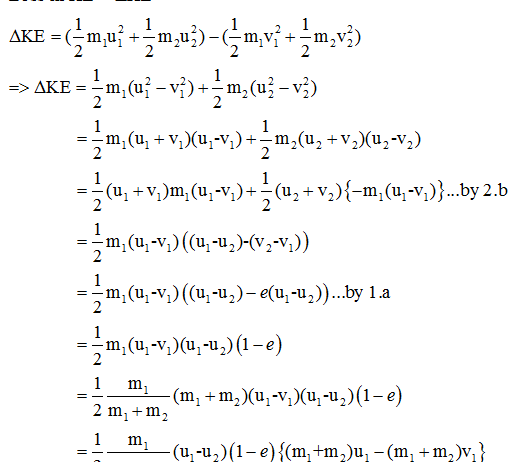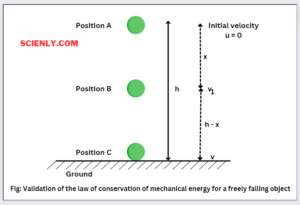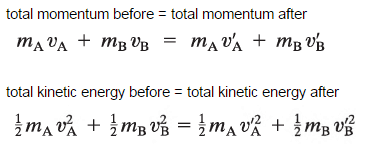Is Mechanical Energy Conserved in an Inelastic Collision? Analyzing Energy Loss in Inelastic Collisions
Have you ever been intrigued by the principles of motion and energy? Imagine two cars crashing into each other at an intersection. What happens immediately after the collision? While the laws of physics govern, a peculiar phenomenon arises. The question lingers: Is mechanical energy conserved during such interactions, particularly in inelastic collisions? Unraveling this puzzle leads to an exploration of energy transformation, loss, and the fundamental concepts underlying collision dynamics.
In this article, we will delve into the world of collisions—focusing on inelastic collisions—and dissect the conservation of mechanical energy. Let’s embark on this intellectual expedition, shall we?
The Mechanics of Collisions
Before we dive into the realm of inelastic collisions, it’s pivotal to know the basic definitions and mechanics at play. Collisions are broadly categorized into elastic and inelastic types, with each demonstrating unique energy characteristics. A collision occurs when two objects exert forces on each other for a relatively short duration, resulting in a change of momentum.
In elastic collisions, both momentum and kinetic energy are conserved. Imagine a perfect game of billiards where balls transfer energy without losing any to other forms. However, inelastic collisions behave differently. Here, momentum is conserved, but kinetic energy is not. A practical illustration of this is seen in car accidents where crumpling occurs upon impact. Energy is dissipated, primarily transforming into heat and deformation. This leads us to the crux of our inquiry: can mechanical energy be deemed conserved in such scenarios?
The Conservation of Mechanical Energy: A Closer Look
To answer the burning question, we must examine the concept of mechanical energy itself. Mechanical energy comprises kinetic and potential energies. In the context of collisions, kinetic energy plays a primary role. A critical understanding reveals that during inelastic collisions, while the total momentum remains steady according to the law of conservation of momentum, mechanical energy does not retain its integrity.
When two objects collide inelastically—like a pair of clay balls squishing together—some kinetic energy is transformed into other forms of energy. This transformation occurs due to factors such as sound, heat, and structural changes. The deformation in the materials absorbed some of that kinetic energy, resulting in a loss during the collision.
What Happens to the Lost Energy?
Energy, as it turns out, does not simply vanish. Although it may seem lost, it transitions to alternative states. During an inelastic collision, not all energy is expelled into the environment; rather, it interchanges into various forms. The crumpling of the objects, for instance, converts kinetic energy into potential energy of deformation. Think of it as a transformation event where energy is not lost but merely altered in state.
Interestingly, acoustic energy is also generated, resulting in sound. The noise of a collision not only signifies the force of impact but also illustrates energy transformation—a telltale sign of energy conversion that is essential in understanding our energy conservation question. Heat dissipates due to internal friction and other processes that occur within and between the colliding bodies. This energy loss can often be significant, depending on the collision’s force and the materials involved.
Exploring Real-World Applications
The theoretical principles of inelastic collisions translate into tangible applications across various domains. In automotive engineering, crash tests analyze the extent of energy loss through vehicle deformation. Understanding how much kinetic energy dissipates during a collision influences vehicle design, ultimately leading to safer automobiles.
Another example exists in sports, where players learn to reduce injury through proper techniques during collisions. Athletes are taught to absorb impacts in ways that utilize body mechanics to minimize energy transfer, supporting better performance and safety on the field. Such applications highlight that while energy cannot be created or destroyed, understanding its conversion plays a critical role in real-world scenarios.
It’s essential, then, to recognize that while mechanical energy is not conserved in inelastic collisions, the principles underlying energy conservation and transformation remain crucial in various scientific and engineering fields. The Jewish philosopher Maimonides once posited that wisdom is derived from understanding how things work—an appropriate assertion when observing energy dynamics.
The Takeaway: Understanding Energy Conservation
In conclusion, mechanical energy is not conserved in an inelastic collision; instead, it undergoes transformation. Through inquisitive exploration, we recognize how kinetic energy reallocates into different forms such as sound, heat, and deformation energy. The playful question posed at the outset is answered through a deeper dive into the principles of momentum and energy. This realization has profound implications in various applications ranging from safety protocols to software developments that influence motion simulations.
In a world where energy efficiency is paramount, recognizing these principles can help society move towards sustainable solutions. As researchers and developers continuously seek advancements, the understanding of energy loss during inelastic collisions remains vital in shaping our present and future. So, the next time you witness a collision—be it on the screen, in sports, or elsewhere—ponder the fascinating dance of energy that transpires. Energy, in its myriad forms, is an intricate tapestry woven into the fabric of our existence.






